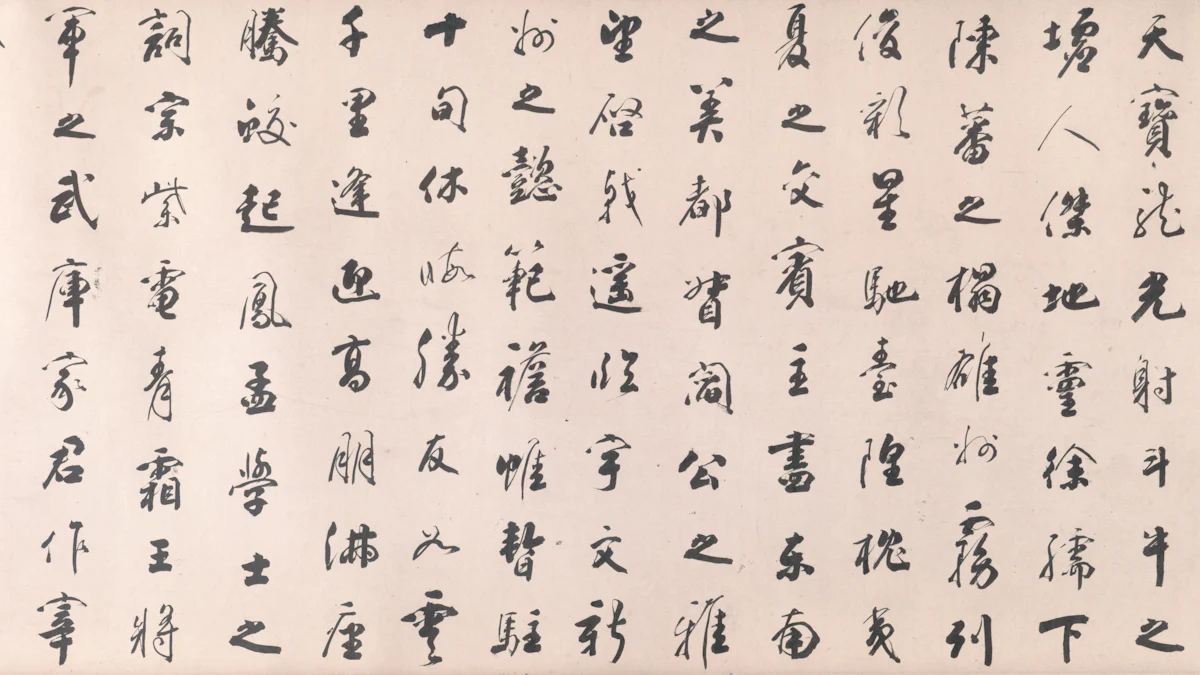Signs and Symbols: An Illustrated Guide to Their Origins and Meanings

Signs and symbols are vital components of human communication, serving as a bridge across language barriers. By delving into their origins and meanings, we gain a deeper appreciation of history and culture. Semiotic theory emphasizes how symbols can enhance learning and engagement. Educators often use illustrations and gestures to improve understanding, while billboards and advertisements depend on symbols for effective communication. This guide will lead you through the intriguing realm of signs, symbols, and history, revealing the secrets behind these influential tools.
Understanding Signs, Symbols, and History

Definition and Distinction
What are Signs?
Signs serve as direct indicators or representations of specific information. Road signs, for example, provide directions and warnings to drivers. In ancient times, people used signs to communicate essential messages. The Nile's lifecycle in ancient Egypt dictated the rhythm of life and death. People relied on the river's signs to understand when to plant crops. Signs have always played a crucial role in human survival and communication.
What are Symbols?
Symbols hold deeper meanings and often represent abstract concepts. The spiral, found in various ancient cultures, signifies everything from the cycle of life to the path leading towards enlightenment. Unlike signs, symbols require interpretation and understanding of cultural contexts. The serpent symbol, for instance, carries dual connotations of evil and healing. This symbol appears in biblical contexts and medical symbolism. Symbols enrich communication by conveying complex ideas and emotions.
Historical Context
Ancient Symbols
Ancient symbols offer insights into the beliefs and values of early civilizations. The sun, universally recognized as a symbol of power and life, was revered across various cultures. Different societies depicted the sun in unique ways, reflecting their understanding of its significance. The swastika, a symbol of good fortune and well-being in Hinduism and Buddhism, was misconstrued in the West due to associations with Nazism. Ancient symbols reveal the diverse interpretations and meanings attributed to similar visual representations.
Evolution of Signs
The evolution of signs demonstrates the adaptability and creativity of human communication. The devil's horns symbol traces back to ancient India. The Buddha used this gesture to expel demons and remove obstacles. Over time, signs evolved to meet the changing needs of societies. Modern road signs, digital icons, and emojis illustrate how signs continue to adapt in response to technological advancements. The history of signs reflects the ongoing development of communication tools throughout human history.
Categorization of Symbols
Symbols play a crucial role in human communication. Understanding their origins and meanings can enhance your appreciation of history and culture. This section explores the categorization of symbols based on their sources and contexts.
Based on Sources
Natural Symbols
Natural symbols often derive from elements found in nature. The sun, for example, symbolizes power and life across various cultures. Ancient civilizations revered the sun for its life-giving properties. Fire serves as another powerful natural symbol. In Zoroastrianism, fire represents truth and order. Many mythologies view fire as a force of destruction and purification. These natural symbols capture human fascination and reverence.
Man-made Symbols
Man-made symbols arise from human creativity and innovation. Architecture provides a rich source of such symbols. Gothic cathedrals, with their soaring spires, symbolize the aspiration towards the divine. Heraldry offers another example, with coats of arms representing family lineage and honor. Modern society continues to create new symbols. Digital icons and emojis illustrate how technology influences communication. These man-made symbols reflect the evolving nature of human expression.
Based on Contexts
Religious Symbols
Religious symbols hold significant meaning within specific faiths. The cross, for instance, represents Christianity and signifies sacrifice and redemption. The yin-yang symbol embodies balance and harmony in Taoism. Religious symbols often convey complex theological concepts. Semiotic analysis helps you understand these symbols within their cultural context. The meaning behind a symbol can shift based on timing and cultural changes.
Cultural Symbols
Cultural symbols represent the values and beliefs of a society. Mistletoe serves as an intriguing example. Ancient Norse myth viewed mistletoe as a symbol of ritual castration. Today, mistletoe is associated with kissing during Christmas. This evolution highlights how symbols can change over time. Semiotics explores the relationships between signs and their intended meanings. Cultural symbols enrich communication by conveying shared experiences and emotions.
The Role of Symbols in Communication

Symbols play a vital role in communication. Understanding their impact helps you appreciate the depth of human interaction. Signs, symbols, and history intertwine to create a rich tapestry of meaning.
Semiotics and Symbolism
Theories of Semiotics
Semiotics explores how signs convey meaning. This field examines why different cultures interpret signs uniquely. You can see this in how gestures or colors hold various meanings worldwide. Semiotic theory helps decode these interpretations. This understanding enhances communication across cultural boundaries.
Symbolism in Language
Language uses symbols to express complex ideas. Words act as symbols representing thoughts and emotions. Metaphors and similes enrich language by adding layers of meaning. Symbolism in language allows you to convey abstract concepts effectively. This enriches both written and spoken communication.
Symbols in Modern Media
Digital Symbols
Digital symbols dominate modern communication. Emojis, for example, express emotions quickly and visually. These symbols transcend language barriers. They allow you to communicate feelings without words. Digital symbols have become essential in online interactions.
Symbols in Advertising
Advertising relies heavily on symbols. Logos and brand icons create instant recognition. These symbols convey messages about quality and trust. Advertisers use symbolism to persuade and influence consumer behavior. Understanding these symbols helps you navigate the world of marketing.
Signs, symbols, and history continue to shape communication. By exploring these elements, you gain insight into human expression. This knowledge enriches your understanding of the world around you.
Case Studies and Examples

Iconic Symbols and Their Meanings
The Cross
The cross stands as a powerful symbol in Christianity. It represents sacrifice and redemption. Early Christians used the cross to identify their faith. The cross also signifies hope and salvation. Many cultures recognize the cross as a universal symbol of faith.
The Yin-Yang
The yin-yang symbolizes balance and harmony in Taoism. This symbol illustrates the dual nature of existence. Light and dark, male and female, represent complementary forces. The yin-yang encourages understanding of life's interconnectedness. Many people use the yin-yang to promote peace and unity.
Contemporary Symbolism
Emojis and Their Impact
Emojis have transformed digital communication. These symbols express emotions quickly and visually. People use emojis to convey feelings without words. Emojis bridge language gaps in global interactions. The rise of emojis marks a new era in communication.
Brand Logos
Brand logos create instant recognition. Companies use logos to convey identity and values. Logos influence consumer perceptions and decisions. Successful logos become symbols of trust and quality. The power of logos shapes modern marketing strategies.
Symbols play a crucial role in daily life. These visual tools encapsulate complex ideas and emotions, acting as a universal language that transcends boundaries. Exploring symbols in various contexts enhances understanding and appreciation of diverse cultures. The evolving nature of symbols reflects societal changes and technological advancements. Embrace the journey of discovering symbols' meanings and origins. This exploration enriches personal knowledge and fosters deeper connections with the world around you.
See Also
Illustrated History of Ancient Egypt
Visual Guide: The Definitive Design
Illustrated History of Ancient Greece

